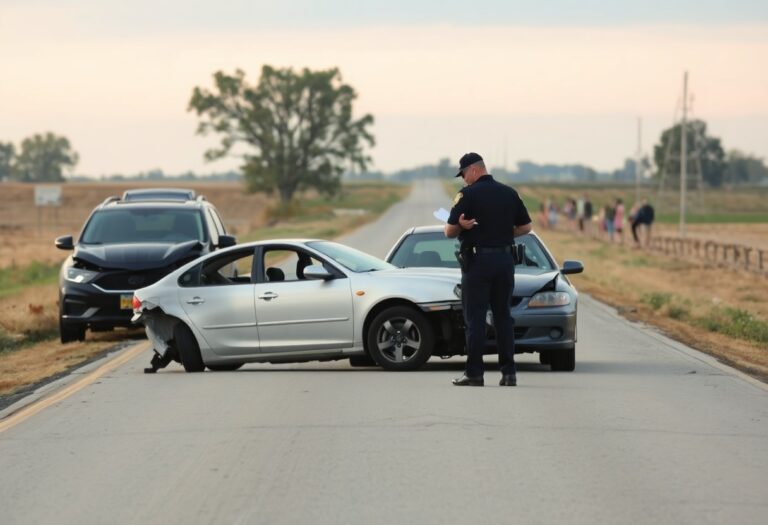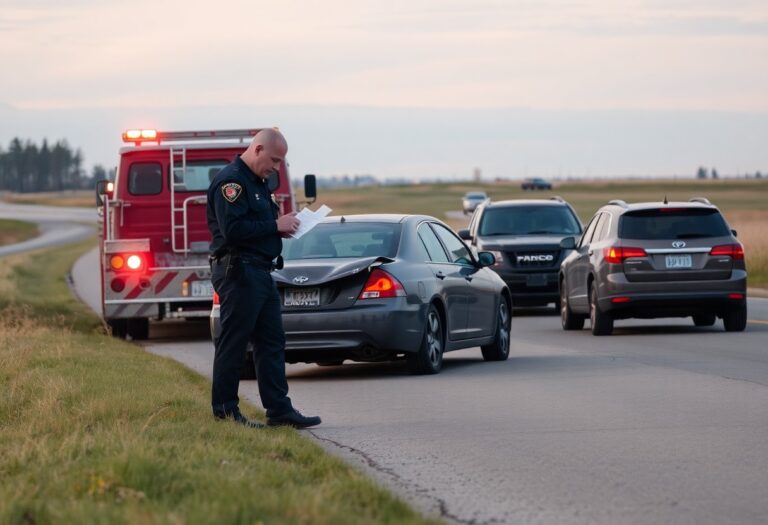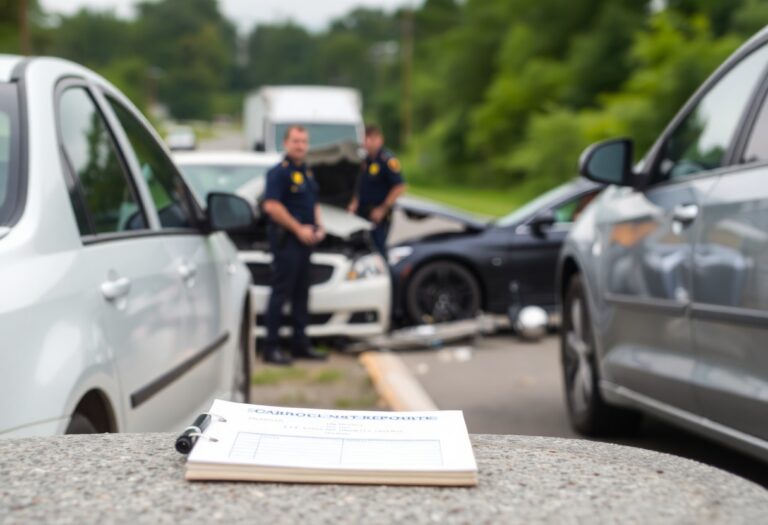You may find yourself needing to obtain a car accident report after an incident in Collin County, Texas. Understanding the process of requesting this report is necessary for handling insurance claims and potential legal matters. In this blog post, we’ll guide you through the steps involved, ensuring that you have all the necessary information to make the process as smooth as possible. Gather your details and let’s probe the specific requirements and resources available to assist you.
Essential Regulations Governing Accident Reports in Collin County
In Collin County, accident reports are subject to specific regulations that dictate how and when they can be accessed. Texas law mandates that law enforcement agencies must complete a report for incidents that result in injuries or fatalities, and this record is typically made available to the public. However, certain sensitive details may be withheld to protect privacy rights or ongoing investigations. Understanding these regulations will streamline your request process and help you access the information you need efficiently.
Local and State Laws Impacting Report Accessibility
Your ability to access car accident reports in Collin County hinges on both local and state laws. The Texas Transportation Code allows individuals to request reports after they are filed, usually within a few days post-incident, unless a legal hold is in place. Additionally, your request could be affected by factors such as the nature of the accident and the parties involved, particularly if it impacts ongoing investigations or litigation.
Identifying the Right Authorities for Report Filing
Knowing the correct authorities to contact for filing an accident report is vital in Collin County. Typically, these reports can be requested from the local police department or the sheriff’s office, depending on where the accident occurred. For instance, if the accident happened on a highway, the Texas Department of Public Safety may also be involved. Familiarizing yourself with the jurisdiction of your incident will expedite the filing process for obtaining your accident report.
To obtain your report, you need to specify which authority to contact based on the accident’s location. Each local police department or sheriff’s office has its own procedures for filing and retrieving reports, often including online request forms, in-person visits, and potential fees. If the accident involved multiple jurisdictions, you may need to contact each relevant agency. Utilizing the correct channels can save you time and frustration, ensuring you receive necessary documentation in a timely manner.
Step-by-Step Guide to Requesting Your Car Accident Report
| Step | Description |
| 1 | Gather necessary information about the accident, including date, time, and location. |
| 2 | Prepare the required documentation, such as a valid ID and proof of involvement in the accident. |
| 3 | Navigate the online or physical request processes provided by local authorities. |
| 4 | Pay any necessary fees to obtain the report. |
| 5 | Receive your car accident report via your chosen method. |
Preparing the Required Documentation
Before you request your car accident report, ensure you have the right documents on hand. You’ll need a valid government-issued ID, proof of involvement in the crash—such as the accident report number or a citation—and possibly the insurance information. Double-check that all documents are current and accurate to avoid delays in your request process.
Navigating the Online and Physical Request Processes
You can request your car accident report through both online platforms and in-person visits to local law enforcement agencies. Online requests can often be completed in minutes, requiring you to fill out a form and pay any associated fees via credit or debit card. In contrast, if you prefer to go the physical route, you’ll visit the police department or county office where you’ll fill out a paper request form and pay in person. Make sure to check the specific office hours and forms of payment they accept to streamline your experience.
Many departments now emphasize online services to expedite report requests. By utilizing online forms, you’re likely to receive your report faster, as digital submissions are processed quickly. However, if you encounter issues online or have specific questions, speaking directly with an officer or clerk can provide clarity and ensure that your request is complete. Each method has its own set of advantages, making it important to choose the one that aligns with your needs and circumstances.
Decoding the Information within Your Accident Report
Reading through your accident report can feel overwhelming, but you can extract valuable insights by understanding the key elements and legal language featured in the document. The report outlines critical details about your accident, including the circumstances leading to the incident, the parties involved, and any citations issued. Familiarizing yourself with these sections will provide a clearer context for your case and assist in any potential claims or disputes that arise.
Key Components to Look For in a Report
Your accident report includes several key components that are vital for assessing the situation. Look for the time, date, and location of the crash, which can provide a timeline of events. The names and contact information of all parties involved, including witnesses, are also documented. Pay close attention to the accident diagram, the officer’s narrative, and any traffic citations issued, as these will heavily influence liability.
Understanding Legal Terminology
Legal terminology in your accident report may seem daunting, but grasping the definitions can illuminate the implications behind the language. Terms like “negligence” or “reckless driving” determine fault and potential liability in a car accident case. Other phrases, such as “full statement” and “witness testimony” affect how evidence is perceived and utilized in legal proceedings. The nuances in the language can carry significant weight in court or during settlement negotiations.
Delving deeper into the legal terminology can enhance your understanding of how your report impacts your case. For example, a statement labeling one driver as “negligent” may strengthen your position in a claim against them, while the term “no-fault” could indicate limited legal recourse. Familiarizing yourself with terms like “collateral damage” or “insurance subrogation” can also help you navigate future discussions with insurance companies and legal representatives more effectively.
Common Pitfalls: What to Avoid When Requesting Reports
Many individuals stumble when requesting car accident reports, often due to simple oversights that can lead to delays or denials. Awareness of these common pitfalls can save you time and frustration. For instance, not providing the necessary details, like the correct accident date or a case number, can hinder your request. Additionally, underestimating the importance of following the proper channels and adhering to specific guidelines set by local authorities can lead to unnecessary complications.
Misunderstandings about Fees and Timelines
Confusion regarding the costs involved and the expected processing timelines can significantly impact your experience. While some reports may come at no cost, others might incur fees that vary depending on the jurisdiction or type of report. Generally, you can expect reports to be processed within a week, but it’s wise to verify current timelines, as they can fluctuate based on the volume of requests and the efficiency of the department handling them.
Errors that Can Delay Your Request
Submitting an incomplete or incorrect request can lead to significant delays. Common mistakes include providing inaccurate information about the accident, such as wrong dates, misspelled names, or incorrect locations. Each of these elements is imperative for the authorities to locate your report efficiently. Additionally, omitting necessary forms or signatures can halt the process entirely, leaving you in a frustrating limbo.
For instance, if you’ve left out the required accident report number or provided an outdated address, the relevant department might struggle to identify your case, resulting in prolonged processing times. Double-checking your information before submission is a smart move to prevent such errors. Ensuring that you accurately fill out forms and provide any supporting documentation will keep your request on track. Keeping a dedicated checklist of required details can also help you avoid these pitfalls effectively.
Leveraging Your Accident Report for Claims and Legal Proceedings
Having your car accident report readily available can significantly influence the outcome of both insurance claims and legal proceedings. Insurance companies rely on the details provided in the report to assess liability and determine the compensation amount. Likewise, if you find yourself in court, the report serves as a vital piece of evidence that can either support your case or substantiate the opposing party’s claims, making your understanding and use of this document imperative.
How to Use Your Report in Insurance Claims
Your accident report plays an imperative role in the insurance claims process. By presenting the report alongside your claim, you establish a factual basis for your injuries and damages. Ensure you highlight pertinent sections, such as witness statements and the officer’s description of the accident scene, as these can directly influence the speed and success of your claim settlement.
The Role of Reports in Legal Cases
In legal environments, accident reports can be pivotal in establishing liability and fact patterns. Courts often validate the report’s findings, especially if it includes expert assessments or documented eyewitness accounts. Disputes over fault can hinge on the report’s information, guiding judges and juries toward a clearer understanding of the events leading to the accident.
Furthermore, the credibility of the accident report can impact the litigation process. Legal representatives often leverage this document to argue for or against liability. For example, in the case of Smith v. Doe, a detailed report provided a third-party perspective that complicated the defendant’s narrative, ultimately influencing the jury’s decision. Being aware of these functionalities allows you to use your accident report effectively within your legal strategy.
Final Words
As a reminder, navigating the process of obtaining a car accident report in Collin County, Texas, is straightforward when you understand the necessary steps. By following the guidelines outlined, you can efficiently request your report online or in person while ensuring you have all required information at hand. Stay organized and proactive, and you’ll find the process simpler, allowing you to focus on your recovery and any subsequent legal matters that may arise from the incident.













